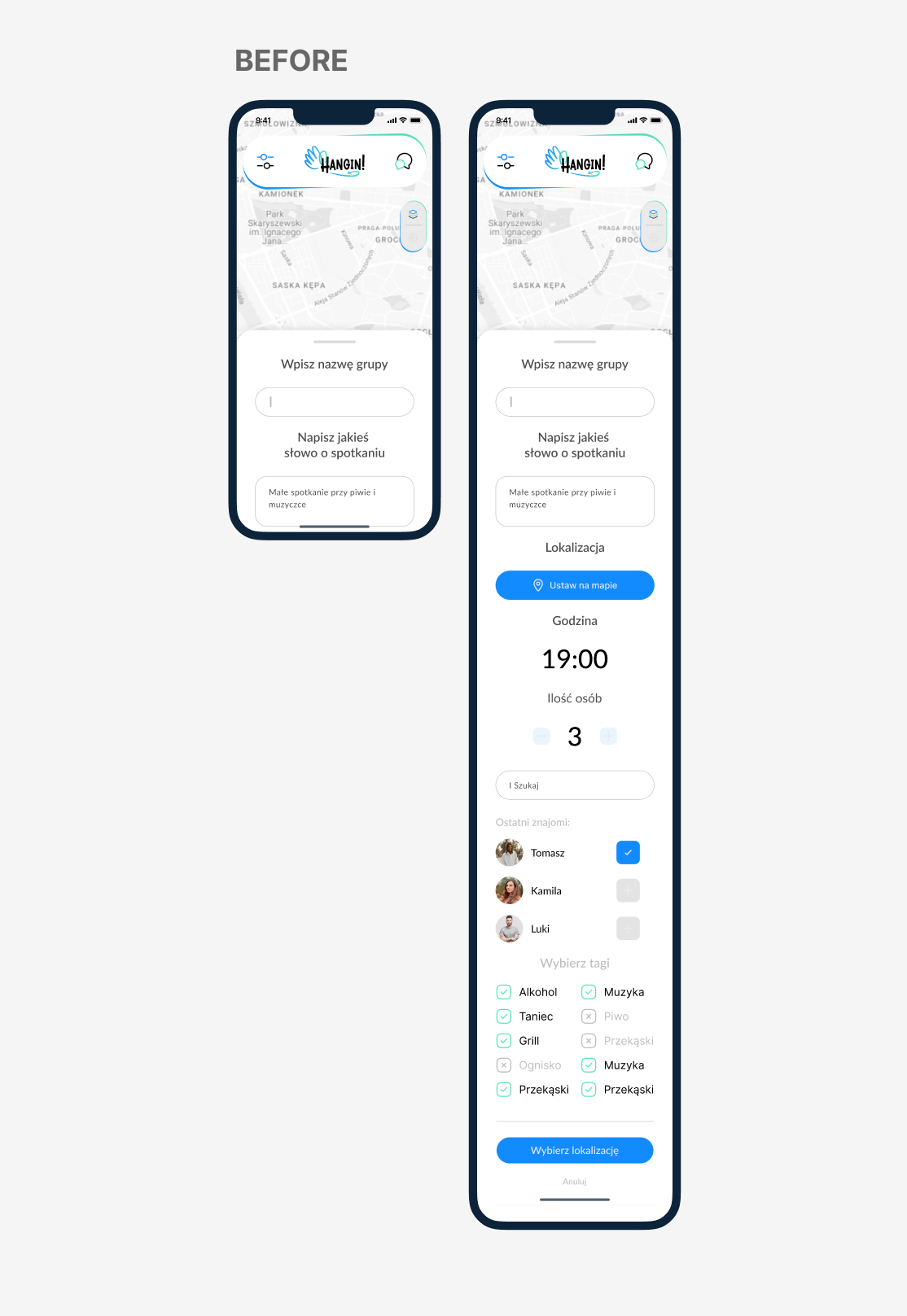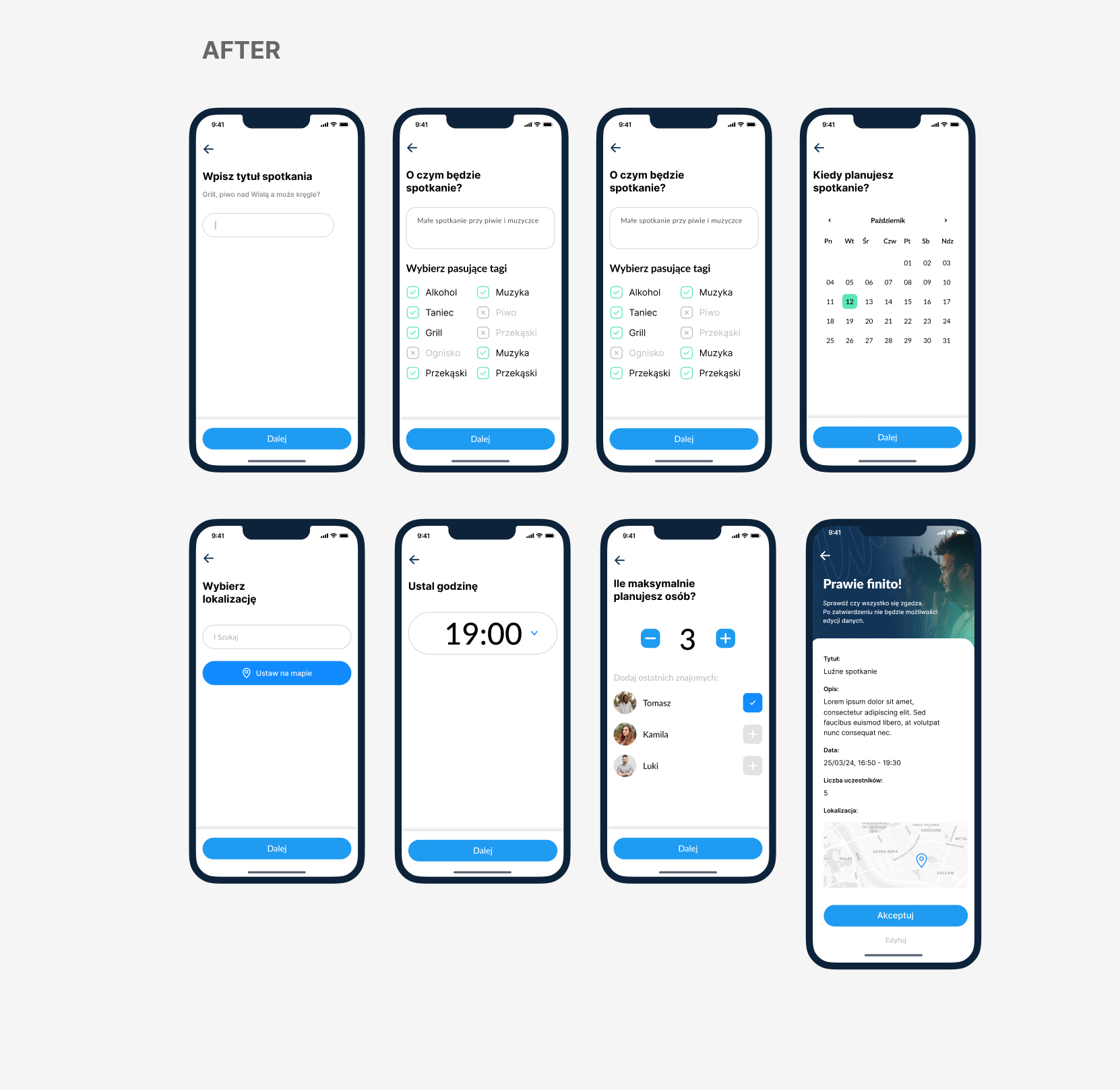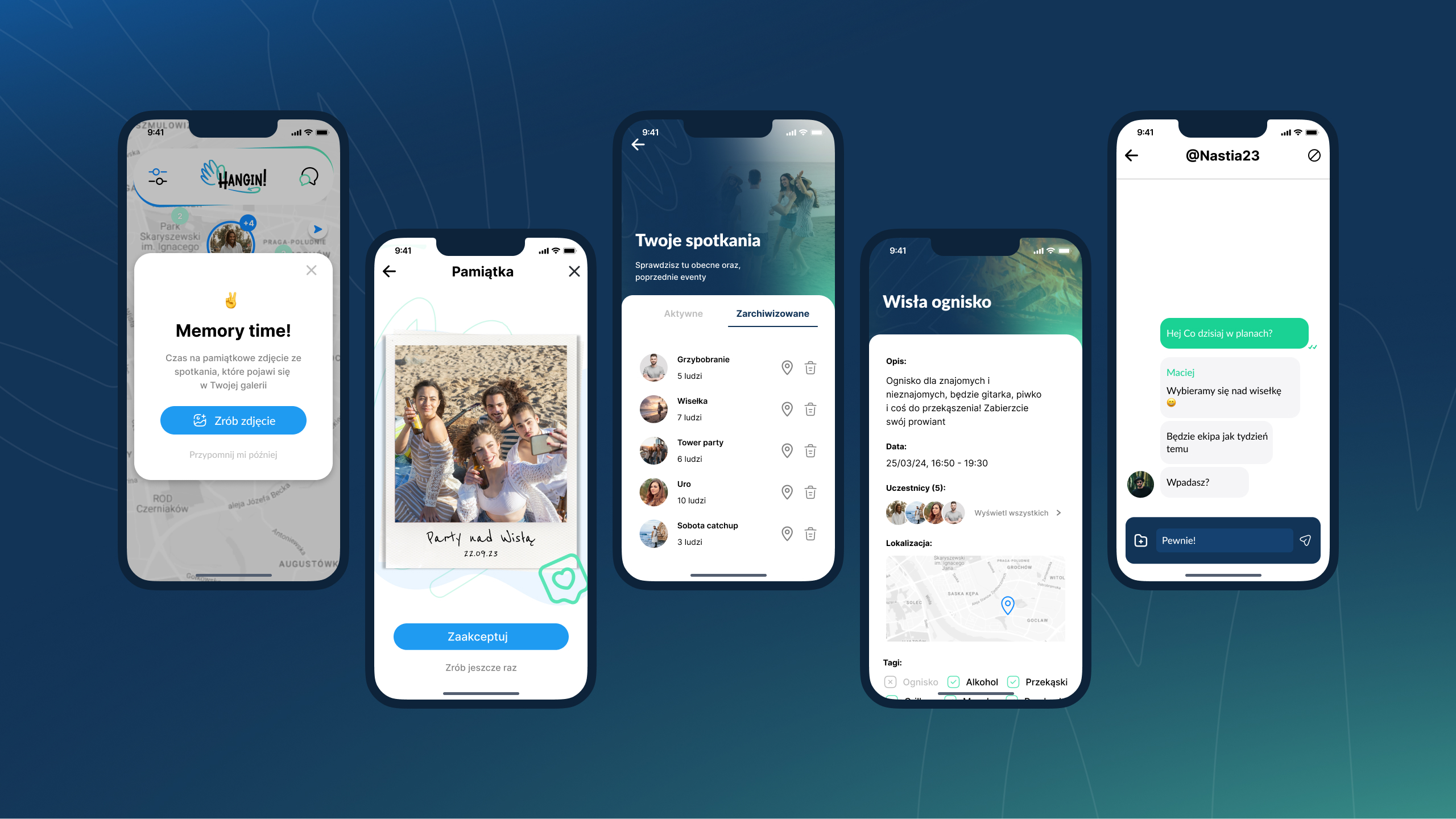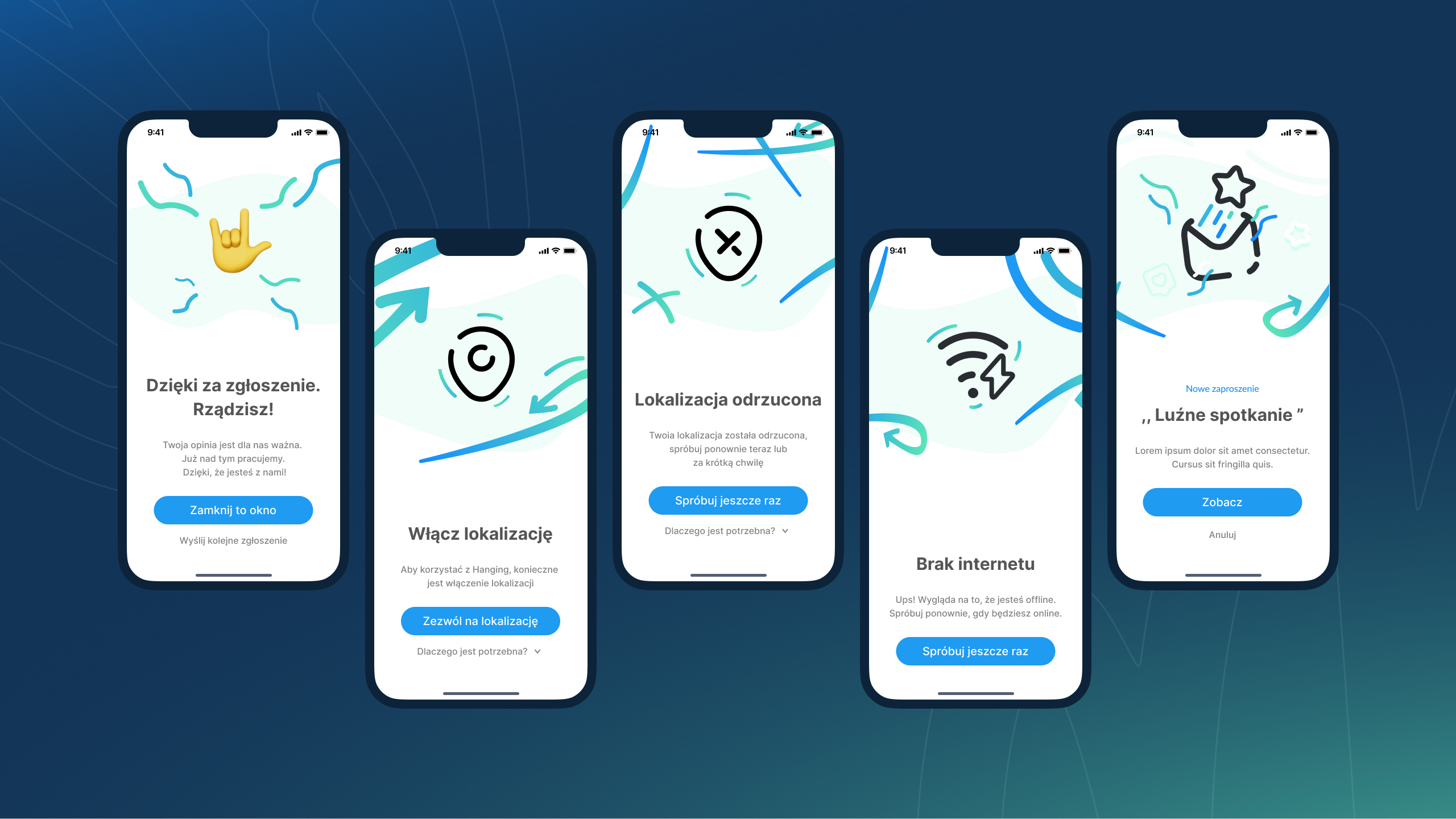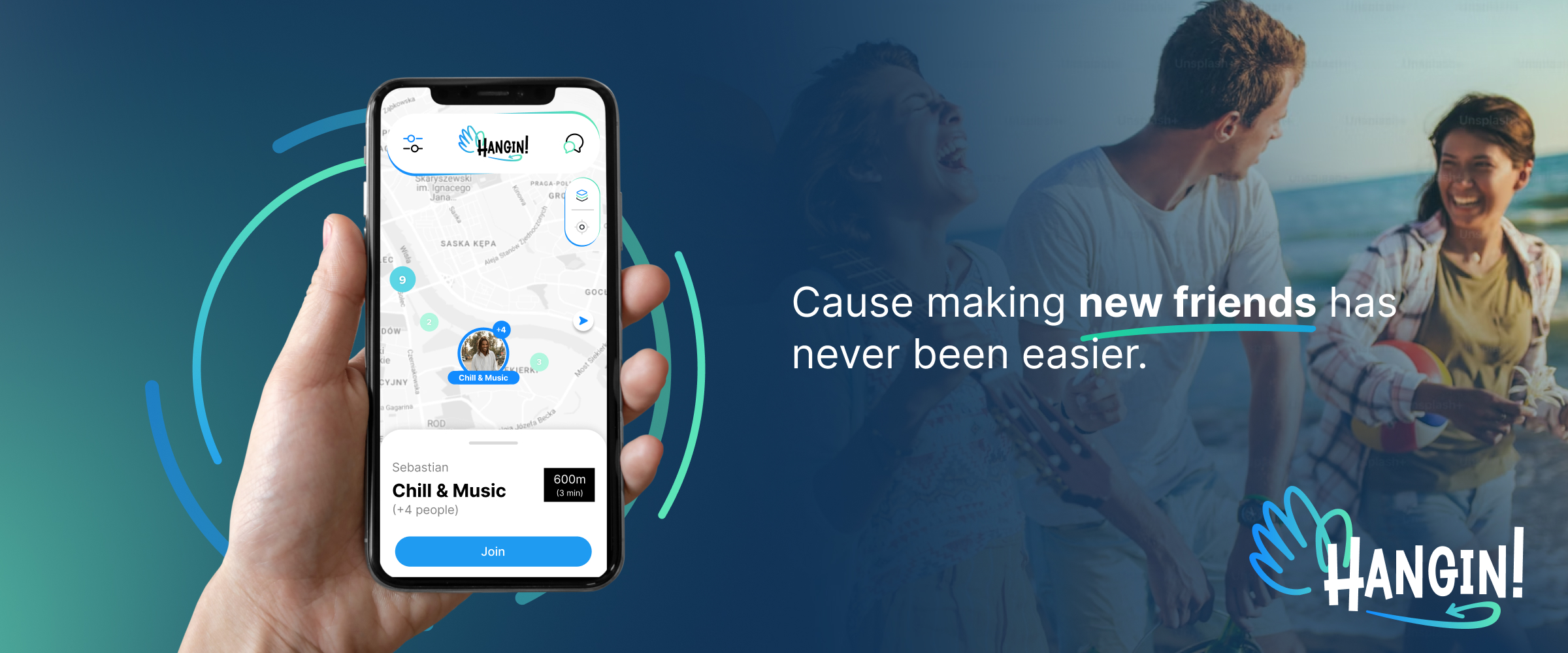
We started noticing a common challenge: people often wanted to go out, explore the city, or try new activities, but didn’t always have anyone to go with. Whether someone was new in town, shy, or just looking to expand their social circle, casual social interactions could be intimidating. Existing platforms didn’t provide a simple, safe way to meet new people spontaneously.
From this observation, the idea for Hangin was born—a mobile app designed to help users create or join local meetups, connect with like-minded people, and build social connections in a friendly and accessible way.
While social apps exist, they often fail to address the needs of people seeking casual, local interactions without prior connections. Users lacked a platform to:
The challenge was to design an experience that made meeting new people intuitive, safe, and engaging.
Hangin aimed to bridge the social gap and help users connect spontaneously.
My role as Lead Visual & UX/UI Designer included:
The goal was to enable users to browse meetups, join groups, create events, and explore profiles in a seamless, engaging way.
Over several weeks, I collaborated with a front-end and back-end developer to create the platform. The design process included:


There wasn’t much we could rely on locally, as no similar apps existed in Poland. Internationally, there were a few comparable platforms, but they suffered from poor UX/UI, weak branding, and unengaging experiences. None of them had a catchy, youthful, and modern look that could appeal to the target audience.
We drew inspiration from modern, visually striking apps that attract younger users and make interactions intuitive and fun—apps like Tinder, Bumble, and other social discovery platforms. The focus was on vibrant colors, clear hierarchies, and friendly interfaces that make social interaction feel approachable and exciting.

We created personas to guide the design:
These personas helped shape the user flows, information hierarchy, and interaction patterns throughout the app.
At this stage, I focused on creating low-fidelity wireframes—a clear blueprint of the app’s structure and user flow. The goal was to design an experience that feels intuitive and familiar, so users can navigate and interact with the app effortlessly, even on their first visit.
Key focus areas:
These wireframes provided a solid foundation for high-fidelity UI design and allowed the team to iterate quickly while keeping user experience at the core
When shaping the visual identity of Hangin, my goal was to make it feel lightweight, dynamic, and youth-oriented—an identity that resonates with young people and feels trendy and catchy at first glance.

When shaping the visual identity of Hangin, my goal was to make it feel lightweight, dynamic, and youth-oriented—an identity that resonates with young people and feels trendy and catchy at first glance.

Design is never finished after the first draft. Throughout the Hangin project, I went through multiple iterations to refine the experience and make the product more engaging and intuitive.
Event Creation
